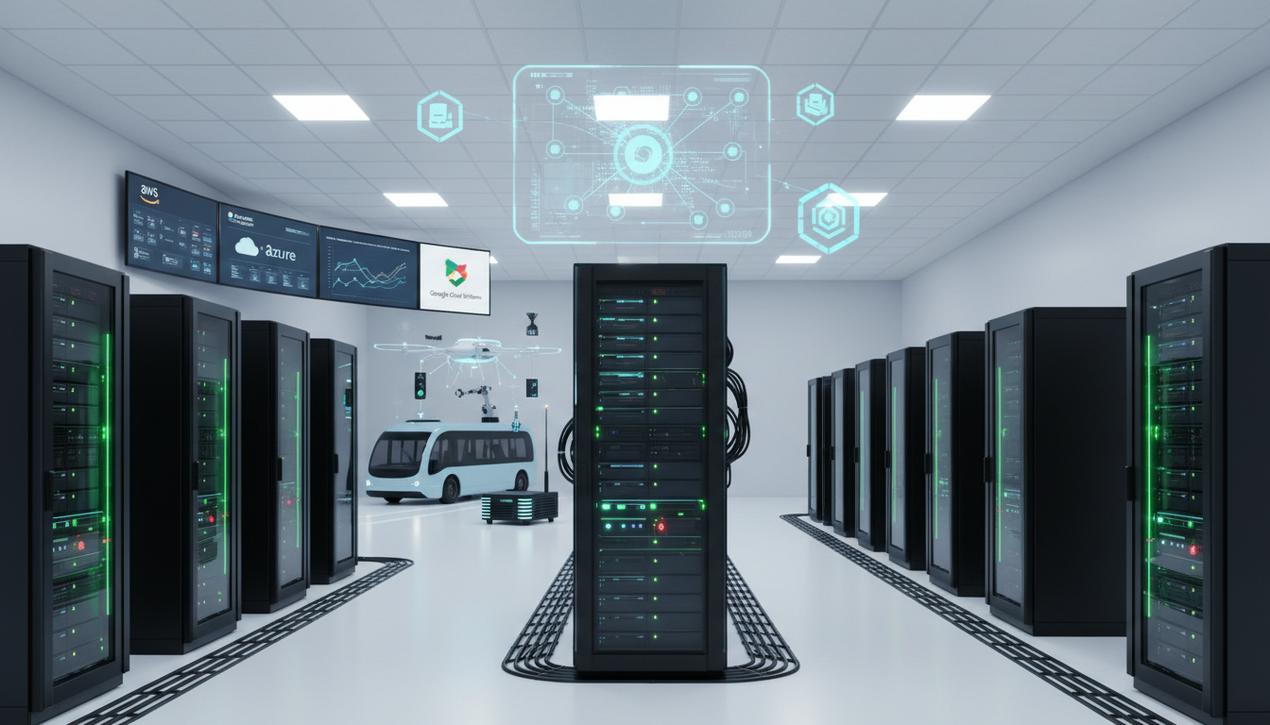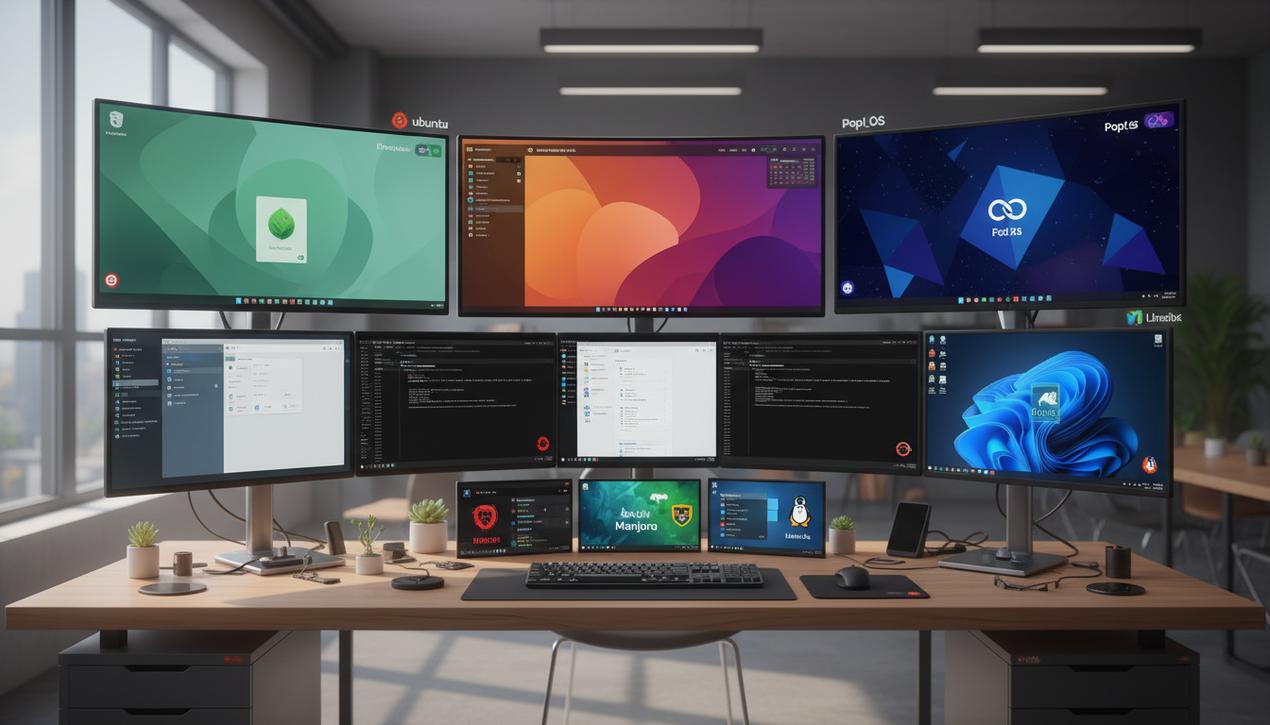A Complete Guide to Server Types in 2025


At the heart of the digital transformation, computer servers form the backbone of every modern business. Whether storing critical data, hosting a website, or running business applications, their role is absolutely central. The global server market is expanding rapidly, projected to exceed $180 billion by the end of 2025, driven by the soaring demand for cloud computing, artificial intelligence, and the Internet of Things (IoT). Far from being a simple metal box, a server is a complex solution that can be physical, virtual, or entirely cloud-based. In 2025, the choice is no longer just about raw power. Key trends like Edge Computing, which processes data closer to its source, and hybrid architectures that combine on-premises and public cloud servers are redefining infrastructure. Understanding the different types of servers and their specific functions has therefore become a strategic imperative to guarantee the performance, security, and scalability of an information system.
What Is a Computer Server and How Does It Work?
A computer server is a powerful computer or program designed to provide services, resources, or data to other computers, known as “clients,” over a network. It operates on the client-server model, where the server waits for and responds to requests from clients. This architecture allows for centralized management, storage, and processing of information, offering greater efficiency and security compared to a model where each computer operates independently.
The Client-Server Model
In theory, the process is straightforward: a client computer (like your laptop) needs a resource—a webpage, a file, or access to an application. It sends a request over the network to the server hosting that resource. The server processes the request, verifies the user’s permissions, and sends the requested data back to the client. This constant dialogue is the foundation of the internet and most corporate networks. To operate continuously, a server is equipped with redundant components (power supplies, hard drives) and a specialized operating system (like Windows Server or a Linux distribution) optimized for stability and managing numerous simultaneous connections.
Physical vs. Virtual Servers
A server can exist in two primary forms. A physical server is a tangible machine, dedicated hardware installed in a data center or a server room. In contrast, a virtual server is a software-based simulation of a physical server. Using technology called a hypervisor, a single powerful physical machine can host multiple, completely isolated virtual servers. This approach, known as virtualization, offers immense flexibility, better hardware utilization, and simplified maintenance, which explains its dominance in modern infrastructures.
The 13 Main Types of Servers and Their Roles
There is a wide variety of servers, each specializing in a specific task. A complete IT infrastructure often relies on the collaboration of several of these server types to function seamlessly.
1. Web Server
This is the most well-known type of server. Its primary role is to host websites, such as those you can convert into a mobile app, and deliver pages to users’ browsers upon request via the HTTP/HTTPS protocol. It stores the website’s files (HTML, CSS, images, etc.) and sends them over the network. The most popular web server software includes Apache, Nginx, and Microsoft IIS.
2. File Server
As its name suggests, a file server centralizes the storage and sharing of files within a network. It acts as a shared hard drive, allowing authorized users to access, modify, and save documents collaboratively. It is essential for data centralization and implementing effective backup strategies.
3. Database Server
This server specializes in storing, managing, and retrieving data organized within databases. It runs a database management system (DBMS) such as MySQL, PostgreSQL, Microsoft SQL Server, or Oracle. Applications and websites interact with this server to read and write information in a structured and secure manner.
4. Mail Server
Essential for any business, a mail server handles the sending, receiving, and storing of emails. It uses protocols like SMTP (Simple Mail Transfer Protocol) for sending and IMAP or POP3 for receiving. It acts as a digital post office, routing messages to the correct recipients and storing them until they are accessed by popular email client alternatives.
5. DNS (Domain Name System) Server
The DNS server is the phonebook of the internet. Its job is to translate human-readable domain names (like www.example.com) into numerical IP addresses (like 192.0.2.1) that computers can understand. Without DNS, we would have to memorize strings of numbers for every website we want to visit.
6. Proxy Server
A proxy server acts as an intermediary between a client computer and the internet. It receives requests from the client and forwards them to other servers. It is often used to enhance security by masking the client’s IP address, filtering web content, or caching web pages to speed up browsing.
7. Application Server
This server hosts and runs complex software applications, acting as a bridge between the database server and the web server. It handles the business logic of an application, which offloads processing from client computers and centralizes updates and maintenance, thereby optimizing license costs.
8. Print Server
Very common in corporate environments, a print server manages print queues for a set of shared printers. When a user initiates a print job, the request is sent to the server, which places it in a queue and sends it to the printer as soon as it becomes available. This allows for efficient management of a large number of simultaneous requests.
9. Virtual Server (Hypervisor)
While not a service-providing server itself, this refers to the machine (or software) that enables virtualization. The hypervisor (such as VMware vSphere or Microsoft Hyper-V) allows for the creation and management of multiple virtual machines on a single physical server, thus optimizing hardware resource utilization.
10. Monitoring and Administration Server
This server’s mission is to continuously monitor the health and performance of the entire network, including servers and applications. It collects data, detects anomalies or failures, and sends alerts to system administrators, enabling proactive maintenance and rapid problem resolution.
11. Edge Server
A major trend in 2025, an edge server is a decentralized server placed geographically close to the data source. Its purpose is to process data locally to reduce latency and the load on the central network. It is crucial for real-time applications such as IoT, autonomous vehicles, and augmented reality.
12. Gaming Server
This type of server is specifically designed to manage the data and logic of multiplayer online games. It synchronizes the actions of all players to ensure a smooth and consistent gaming experience for everyone, handling thousands of simultaneous connections with very low latency.
13. Media Server
Specializing in storing and streaming multimedia content like video and music, a media server is optimized to deliver large volumes of data smoothly and quickly to multiple users. It is the core of platforms like Netflix, YouTube, and Spotify.
2025 Trends: Cloud, Edge, and Artificial Intelligence
The server landscape is in constant evolution. Today, the decision is no longer just about choosing a server type, but an entire architecture. The overwhelming trend is the adoption of the cloud, with global spending on public cloud services expected to exceed $700 billion in 2025.
The Dominance of Cloud Infrastructure
Giants like Amazon Web Services (AWS), Microsoft Azure, and Google Cloud Platform (GCP) offer a full range of on-demand virtual server services. This approach (Infrastructure as a Service – IaaS) allows companies to rent computing power without investing in costly hardware, offering near-infinite scalability and a pay-as-you-go model (OpEx).
The Rise of Hybrid and Multi-Cloud Models
Rather than choosing between on-premises servers and the cloud, more and more companies are opting for a hybrid approach. They keep their most sensitive data on private servers while using the public cloud for less critical applications or to handle peak loads. The multi-cloud strategy, which involves using services from multiple cloud providers, is also gaining popularity to avoid vendor lock-in and optimize costs.
Specialized Servers for AI
Artificial intelligence and machine learning require phenomenal computing power. This has led to the emergence of specialized servers equipped with Graphics Processing Units (GPUs) or Tensor Processing Units (TPUs), capable of performing high-speed parallel computations essential for training AI models.
How to Choose the Right Type of Server
Choosing a server infrastructure is a strategic decision that must be guided by a thorough analysis of your current and future needs.
- Assess Business Needs: What applications do you need to host? How many users will you serve? What is the volume of data to be stored and processed? The answers to these questions will determine the types of servers you need.
- Performance and Scalability: Analyze your requirements for processing power (CPU), memory (RAM), and storage. Think ahead: will your solution need to accommodate rapid growth in users or data? The cloud offers unparalleled flexibility here.
- Security and Compliance: Security is paramount, especially if you handle sensitive data. This includes robust server configurations and user-level practices like secure password sharing. Also, consider compliance requirements (GDPR, HIPAA, etc.).
- Budget and Total Cost of Ownership (TCO): Compare the cost of an initial hardware investment (CapEx model) with the cost of a monthly subscription to cloud services (OpEx model). Remember to include costs for maintenance, electricity, and personnel.
- Management and Maintenance: Do you have the in-house technical skills to manage and maintain your own physical or virtual servers? If not, a fully managed solution from a cloud provider or hosting company might be more appropriate.
Choosing the right server type, or more accurately, the right server architecture, is a fundamental decision that will directly impact your company’s agility, performance, and security. In a rapidly evolving technological ecosystem, a well-designed, flexible, and scalable infrastructure is one of the greatest assets for innovation and competitiveness in 2025 and beyond.




